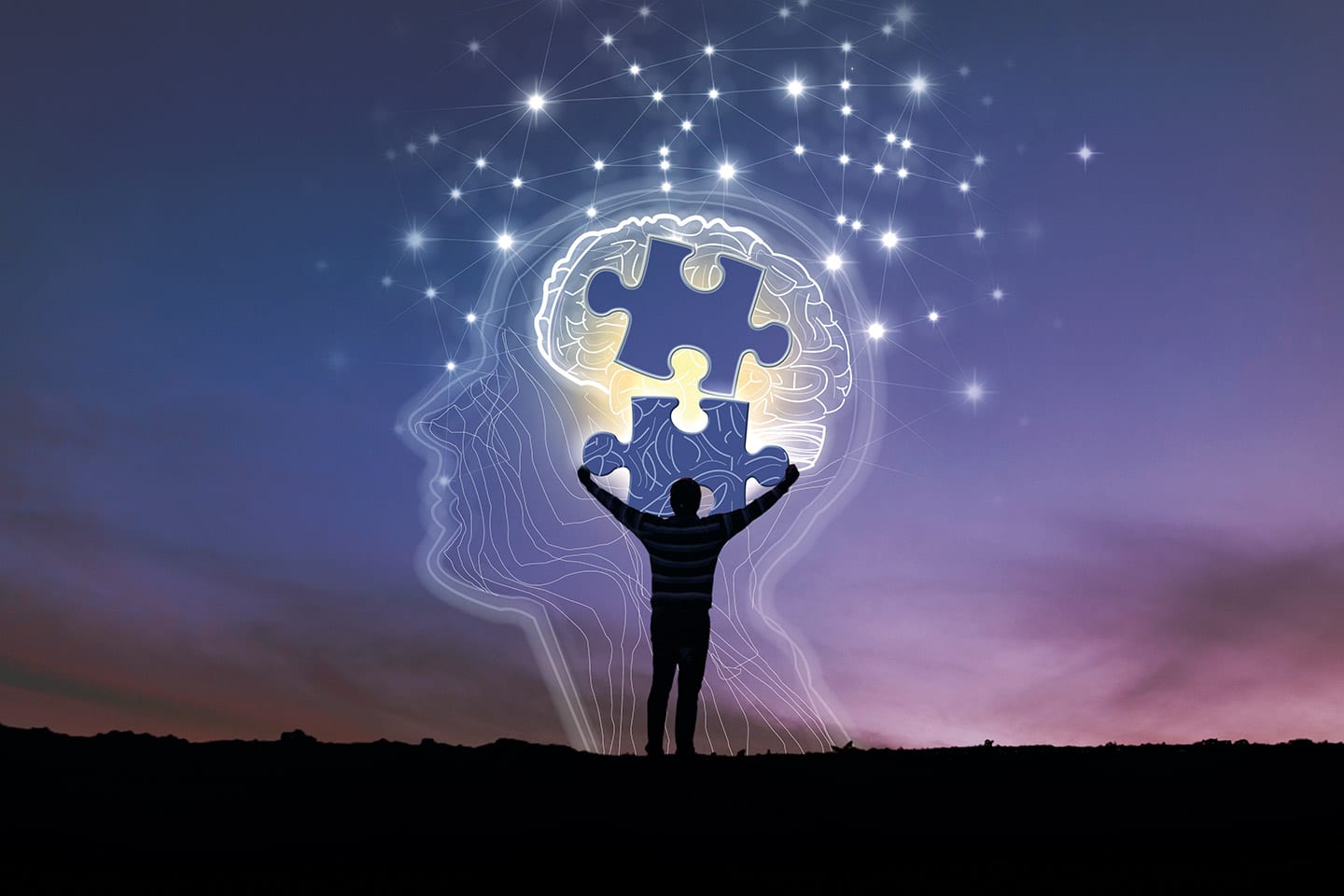What You Should Know
As people age, it’s normal to become a little forgetful of things – where you put that book you’ve been reading or what day of the week it is. However, Alzheimer’s disease is more than that. A progressive neurological disorder that results in brain atrophy, Alzheimer’s is the most common cause of dementia and, unfortunately, is irreversible. However, some treatments can slow the advancement, and there are many different care options for those with the disease. Read on to learn more.
By Anna Hill
Alzheimer’s disease is characterized by a continuous decline in thinking, social, and behavioral skills that ultimately affects one’s ability to function independently. Over 5 million adults in the United States over the age of 65 live with Alzheimer’s, and 80% of those are over the age of 75. Fortunately, medication can sometimes slow the effects of the disease, so here are some symptoms to look out for if you or someone you know is in an at-risk group for Alzheimer’s.
Symptoms
Impaired memory or memory loss is the most prevalent symptom of Alzheimer’s disease. “As we age, it is common to have slight forgetfulness. That isn’t a reason to start worrying just yet,” explains Alisha Landes, the executive director at The Lantern at Morning Pointe Alzheimer’s Center of Excellence. However, Alzheimer’s is more than just forgetfulness. At first, lapses in memory may only appear mild, such as forgetting about an event or mixing up names. However, these lapses will grow more frequent and significant, leading to things such as:
- Repeating things over and over
- Getting lost in familiar places
- Regularly misplacing possessions
- Forgetting entire conversations or events
- Struggling to remember the names of family members or everyday objects


Chief Medical Officer,
Alleo Health System
Alhough it’s the most common, memory loss isn’t the only symptom of the disease. “Dementia proceeds from simple word and detail loss to more confusion – things like getting lost driving and forgetting how to do common things,” explains Dr. Greg Phelps, the chief medical officer at Alleo Health System. The ability to concentrate, multitask, and use reasoning also goes through a decline, which means that someone with Alzheimer’s may no longer be able to make good judgments in everyday situations.
Planning and completing ordinary tasks also become difficult, which can impact abilities such as grocery shopping and cooking or getting dressed properly each morning.
The changes someone’s brain goes through as a result of the disease can also affect their personality and their moods, and a person with Alzheimer’s might seem depressed or more irritable than usual, sometimes even suffering from delusions. If symptoms like these arise and persist, it’s best to consult with a doctor.
Causes and Risk Factors
The medical community currently has no definitive answer as to what causes Alzheimer’s, though at this time, the consensus is that it’s likely due to a combination of genetics, lifestyle, and environmental factors that affect the brain over time. While the exact cause of Alzheimer’s is unknown, there are multiple risk factors that can contribute to someone’s likelihood of developing the disease. For example:
AGE. The older you progress past 65, the more at-risk you are for the disease.
GENETICS. If a close relative has a history of Alzheimer’s, you might be at elevated risk for it as well.
HEAD TRAUMA. Those who have suffered severe head trauma at some point in life have shown an increased risk of Alzheimer’s and dementia.
LIFESTYLE. Those with a history of alcoholism, obesity, smoking, or high blood pressure might be at higher risk of developing Alzheimer’s.
While some of these factors can’t be modified, others can, and taking care of your mind and body throughout life might lower your risk of Alzheimer’s.



Executive Director,
The Lantern at Morning Pointe Alzheimer’s Center of Excellence
Treatment
Though there is no cure or treatment that will reverse symptoms of Alzheimer’s, there are still some options. “There are medications that the doctor may prescribe that may help slow the progression of the disease,” explains Landes. “The disease can also be managed with different medications.”
A category of drugs called cholinesterase inhibitors, which preserve the chemical messengers that send communications in the brain that Alzheimer’s will deplete, are often the first type of medication prescribed and can mildly alleviate symptoms. A drug called memantine is also used to slow the progression of symptoms and can be used in combination with cholinesterase inhibitors. Furthermore, some medications might be used to treat individual symptoms, such as antidepressants for low mood.
Often, treatment for Alzheimer’s is non-medical and more about the amelioration of the person’s situation. “Probably the biggest misconception is depersonalization of the dementia patients,” says Phelps. “Too many times, the patient becomes less than a ‘person’ and we talk about them instead of to them. They can still retain some memories, songs, and activities that bring them joy.”
Placing an emphasis on daily routines can be helpful in preserving some quality of life, and adapting their surroundings to their needs is a must. This might include establishing a designated place for important items to ensure that they don’t get lost; setting up their bills to be paid by automatic deposit; and placing photos of loved ones in prominent places around the house.
Unfortunately, Alzheimer’s can often progress into a stage where someone can no longer remain in their own home, and they might be transitioned into a care facility. That way, they can be guaranteed proper care and medical attention from those who are specialized to work with patients who have the disease and can no longer look after themselves. Though it can be daunting to finally make that move, know that they will be in good and capable hands.
Though Alzheimer’s disease can be an intimidating diagnosis, there are steps you can take to prolong good quality of life and plenty of resources available that are here to help. Don’t be afraid to reach out for support.

